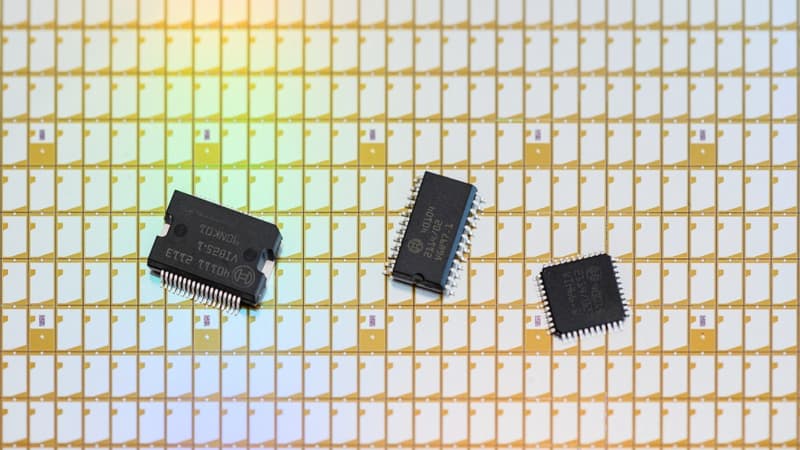How is it possible that our smartphones today are millions of times more powerful than the computer installed on the Apollo 11 moon rocket? This is due in large part to one of the fundamental rules of modern computing, but now the subject of intense debate among the major players in the industry: Moore’s Law.
This “law” was devised in 1965 by Gordon Moore, at the time head of Fairchild Semiconductor Research and Development, and future co-founder of the electronics giant Intel. According to him, the number of transistors on a constant-size electronic chip would double every year in the 1970s, a rate that later dropped to every two years beginning in the 1980s.
A rule that may seem complex, but whose effects are relatively simple to understand: the transistor is one of the basic elements of modern electronics, one of the famous semiconductors that are omnipresent today and whose scarcity harms many industrial sectors. If a machine contains more of them, because they have become smaller, for example, then it can perform complex operations more quickly and thus be more powerful.
Turned into one of the foundations of the transhumanist hopes of digitalizing the brain, Moore’s law has nothing to do with a physical mechanism but with an economic prediction, based on demand and competition between the actors in the sector.
Components 20,000 times finer than a hair
And what seemed like a wet-finger prediction has historically been verified: the number of transistors on a single electronic chip has increased exponentially for half a century. It has grown from 2,308 in 1971 to more than 19 billion in 2017, according to data compiled by the Our World in Data website.
This is largely due to the miniaturization of components, the smallest of which today is less than ten nanometers; by comparison, a hair is almost 100,000 nanometers wide. Major electronics manufacturers, including Taiwan’s TSMC and South Korea’s Samsung, have been in a ruthless miniaturization race for years: they can produce 5-nanometer transistors, and South Korea has outdone its opponent by recently shipping the first of 3 nanometer chips. Intel, meanwhile, is still stuck around 7 nanometers, according to CNBC.
But this frenetic race could run into physical limits. Below a certain size, we enter the domain of the infinitely small, which is governed by the rules of quantum physics. Electrons moving in circuits could, for example, pass through materials if they are too thin, due to “quantum tunneling”, which poses new challenges.
The other problem is that the cost of each new advance is also exponential. The factory that TSMC is building in Arizona, to make 5-nanometer chips starting in 2024, is expected to cost $12 billion, according to Reuters.
What future for Moore’s Law?
Intel claims, however, that the empirical law enacted by its co-founder is still valid. It must be said that the company, which intends to spend tens of billions of dollars (including 80,000 million in Europe) to catch up in the race for miniaturization, has things to prove.
In particular, it features new ultraviolet radiation lithography techniques and a new chip architecture (called RibbonFET) to pack ever smaller transistors. Aiming to reach “a trillion transistors in a single-chip package by the end of the decade,” Intel boss Pat Gelsinger said at a new product launch in early October.
But others are more skeptical, like Nvidia, the graphics card giant whose president, Jensen Huang, explained to investors in September that “the push-through method with new transistors and advances in Moore’s Law have largely come upon completion,” according to CNBC. And to decide: “Moore’s law is dead.”
That’s why electronics giants are also looking to push back current limits without necessarily going through transistor downsizing. Among the processes studied, the quantum computer stands out, which is based on the interaction of “qubits” – a quantum storage unit – and which must be thousands of times more powerful than a conventional computer. But despite the prototypes proposed by big companies like Google or IBM, none of these machines have yet achieved their goal, due to the extreme complexity of this new playing field that has still crammed transistors into chips for a few years.
Source: BFM TV


